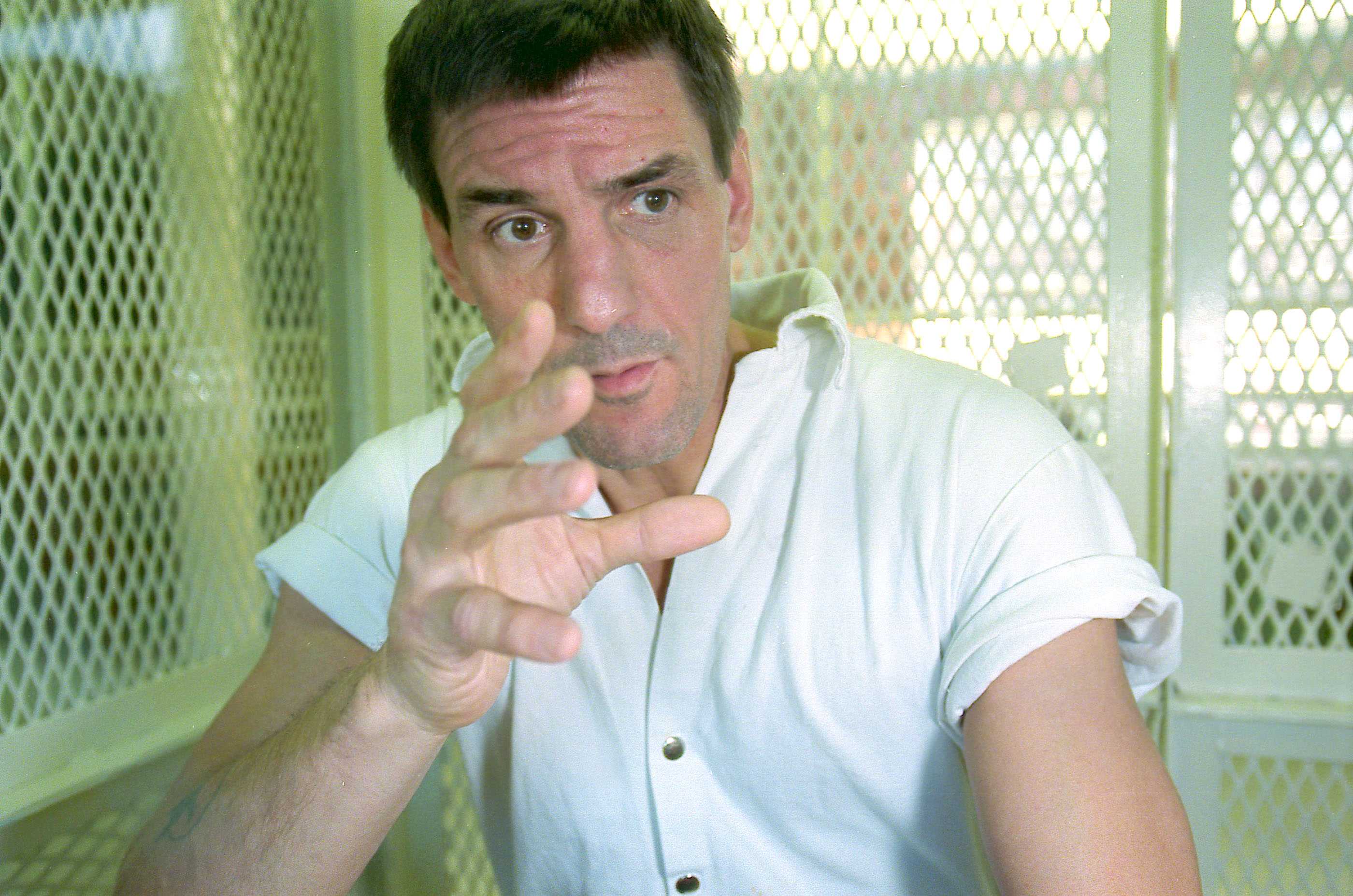Scott Panetti, a Texas inmate currently housed on death row, believes that Selena Gomez is his daughter and that the State of Texas, in coordination with the devil, orchestrated his previously scheduled execution in order to prevent him from teaching gospel.
During his trial, he fired his lawyers (whom he believed to be plotting against him) and showed up in style — strutting around in a purple cowboy suit, bandana, cowboy boots and spurs. Panetti subpoenaed over 200 witnesses, including Jesus Christ, JFK and the Pope; surprisingly, nobody from this colorful cast of characters showed up.
Although he was first diagnosed with paranoid schizophrenia all the way back in 1978, and according to his legal records, he has been hospitalized and diagnosed 14 times since then for schizophrenia and other mental disorders, lawyers for the state of Texas successfully argued that he was not legally “insane” when he murdered his in-laws and secured the death penalty against him.
Thus, at this point, it’s uncertain whether Panetti – or the morally bankrupt state officials who pushed for the execution of a man with such prominent mental deficiencies – are more delusional.
Thankfully, a federal appeals court agreed to halt Panetti’s execution after desperate pleas by his attorneys, who argued that Panetti is far too mentally incompetent for the death penalty. Although justice may ultimately prevail in Panetti’s case, the pleas on behalf of countless other mentally incompetent prisoners on death row frequently and unforgivably go unanswered.
Too many intellectually disabled prisoners on death row
A recent study by professors Robert J. Smith, Sophie Cull and Zoë Robinson published in Hastings Law Journal analyzed the histories of 100 people executed during 2012 and 2013; they found that the vast majority of executed offenders suffered from one or more significant cognitive and behavioral deficits.
According to the study, one-third of the last 100 offenders who were executed had intellectual disabilities, borderline intellectual function or traumatic brain injuries; thus, no matter how horrific their crimes were, a staggering percentage of the offenders possessed neurological deficits that should have mitigated their sentences.
More than 50 years ago in Trop v. Dulles, the U.S. Supreme Court laid down its cornerstone standard guiding the Eighth Amendment’s cruel and unusual clause, stating that the amendment embodies “the evolving standards of decency which mark the progress of a maturing society.”
Since this pivotal ruling, the Court — using this standard — has made substantial progress by ruling that executing juveniles and the mentally handicapped is unconstitutional (side note: the U.S. used to do this).
The staggering amount of mentally incompetent prisoners still languishing on death row demonstrates that the principal concept underlying the Eighth Amendment has yet to be fully enshrined – that is, the protection of human dignity.
In short, it’s impossible for people with severe mental disorders, such as Panetti, to receive a fair trial; as a result of their mental deficiencies, they are more likely to give false confessions, are less culpable for their crimes and are often unable to provide meaningful assistance to their counsel.
What are the purposes of punishment?
According to Dr. Dina Perrone, an Associate Professor of Criminal Justice at Cal State Long Beach, “The primary purposes underlying our penal system are rehabilitation, incapacitation, deterrence and retribution.”
However, executing prisoners with mental deficiencies, no matter how heinous the crime, patently fails to appropriately accomplish any of the penological goals underlying our criminal justice system.
First, an individual can never be rehabilitated once he or she is executed; as the Court stated in Reid v. Covert back in 1957, “the taking of life is irrevocable;” no need for further argument there.
Imposing the death penalty undoubtedly will serve the penological goal of incapacitation; however, locking up an individual for life without the possibility of parole accomplishes the exact same interest for much cheaper. Since cases in which the death penalty is sought cost about four times more than those where the recommended sentence is life imprisonment without the possibility of parole (an average of $395,762 per case as compared to $98,963, according to the Death Penalty Information Center), squashing the death penalty simply makes fiscal sense.
As to the goal of deterrence — whereby the offender and others around him or her witness the punishment and make the rational decision to not commit the same crime — there is a wide consensus that the death penalty fails to advance this goal. For example, a 2009 study published in the Journal of Criminal Law and Criminology found that 88 percent of the top criminologists in the country do not believe that capital punishment acts as a deterrent to homicide.
Finally, imposing the death penalty upon those with severe mental illnesses, such as paranoid schizophrenia in Panetti’s case, fails to accomplish the goal of retribution since the individual, by the nature of his or her neurological impairment, is not as morally culpable.
As the Court stated this May in the case of Hall v. Florida, “to impose the harshest of punishments on an intellectually disabled person violates his or her inherent dignity as a human being” because the “diminished capacity of the intellectually disabled lessens moral culpability and hence the retributive value of the punishment.”
In other words, justice isn’t being served if those with intellectual disabilities, as determined by IQ data and the recommendations of psychologists, are held to the same moral and legal standard as those without such deficiencies.
Although the U.S. Supreme Court has carved out protections for the intellectually disabled and juveniles, individuals like Panetti with severe mental diseases continue to unfairly languish on death row despite the fact that capital punishment fails to serve any of the recognized goals of punishment for this specific prisoner population.




